Quartzite is a hard, non-foliated metamorphic rock composed almost entirely of the mineral quartz. It originates from pure quartz sandstone that, under intense heat and pressure within the Earth’s crust, recrystallizes into a dense, interlocking mosaic of quartz grains. This transformation results in a stone celebrated for its remarkable durability, natural beauty, and unique veining patterns.
Quartzite’s formation process imparts it with exceptional hardness—one of the only materials harder than quartzite is diamond—and a glassy luster that ranges from bright whites and greys to soft pinks or reds, depending on trace mineral content en.wikipedia.org.
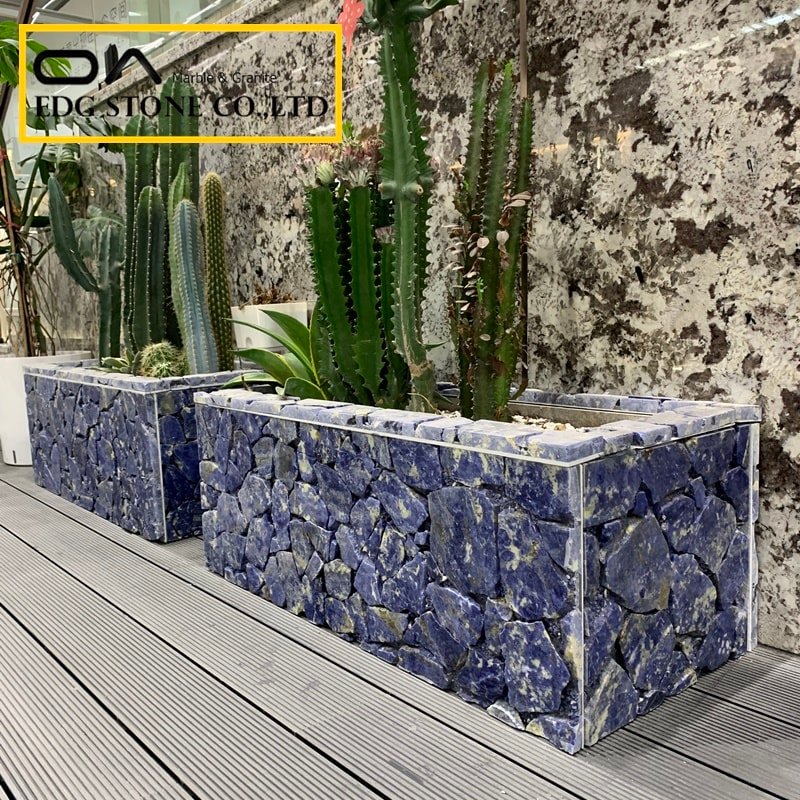
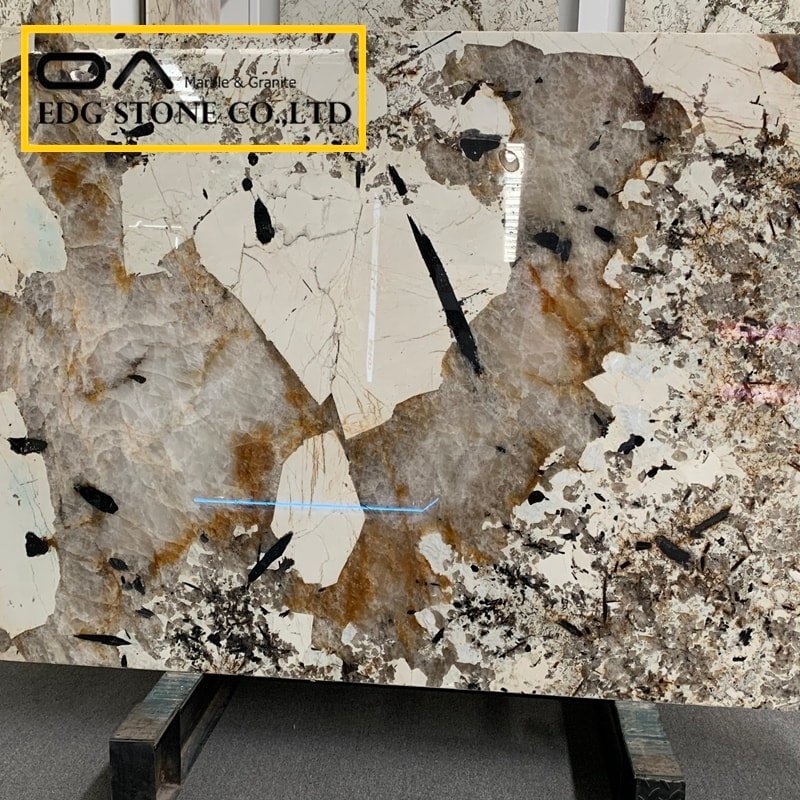
Quartzite Countertops and Slabs
Table of Contents
Toggle- Quartzite Countertops and Slabs
- What is the Difference Between Quartz and Quartzite?
- Quartzite Countertops vs. Quartz Countertops
- Guide to Quartzite Slabs | EDG Stone
- Pros and Cons of Quartzite: Why This Natural Stone is Gaining Popularity
- The Definitive Guide to Quartzite
- Outstanding Types Of Quartzite Countertops
- What You Need to Know About Quartzite Countertops
- FAQ: Everything You Asked About Quartzite
- Conclusion
- References
Quartzite slabs are quarried in large blocks, then cut and polished for use as countertops, flooring, and wall cladding. Homeowners prize quartzite countertops for:
Natural veining and color variation, delivering a “marble-like” appearance without the fragility of marble.
Heat resistance, tolerating hot pans and direct sunlight far better than many engineered surfaces.
Scratch resistance is due to its superior hardness.
Where to find quartzite slabs near you: Major stone suppliers and fabricators often stock popular varieties such as Taj Mahal, Fantasy Brown, and Bianco Branco. Many also list local inventory online under “quartzite slabs near me.”
What is the Difference Between Quartz and Quartzite?
Although their names sound similar, quartz and quartzite are fundamentally different materials:
Quartz: An engineered stone made by combining crushed quartz crystals (about 90–93%) with resins and pigments. It is non-porous and low-maintenance, offering limitless colors and patterns.
Quartzite: A natural metamorphic rock formed from sandstone under geologic heat and pressure. It features authentic mineral veining, but is porous and requires periodic sealing.
| Feature | Quartz (Engineered) | Quartzite (Natural) |
|---|---|---|
| Composition | ~90% quartz crystals + resin & pigment | 100% natural quartz grains |
| Porosity | Non-porous (no sealing needed) | Porous (requires sealing) |
| Color & Pattern Control | Unlimited varieties | Unique, one-of-a-kind from nature |
| Heat Resistance | Good (limited by resin) | Excellent (formed under high temperatures) |
| Scratch Resistance | High (but slightly less than quartzite) | Very high (harder than granite & quartz) |
| Maintenance | Wipe clean with mild soap | Seal every 1–3 years; avoid acidic cleaners |
Quartzite Countertops vs. Quartz Countertops
When choosing between quartzite countertops and quartz countertops, consider:
Aesthetics
Quartzite delivers genuine marble-like veining with natural depth.
Quartz offers consistent patterns and an almost infinite palette.
Durability & Maintenance
Quartzite is more heat- and scratch-resistant but porous; it requires sealing to prevent staining.
Quartz is stain-resistant and maintenance-free, but vulnerable to heat damage if exposed to very high temperatures.
Cost
Quartzite typically costs $80–$220 per square foot, depending on rarity and origin.
Quartz ranges from $50–$200 per square foot, with more budget-friendly options available.
Longevity
Properly maintained quartzite can last 50–100 years.
Quartz lasts 20–60 years before potential resin discoloration.
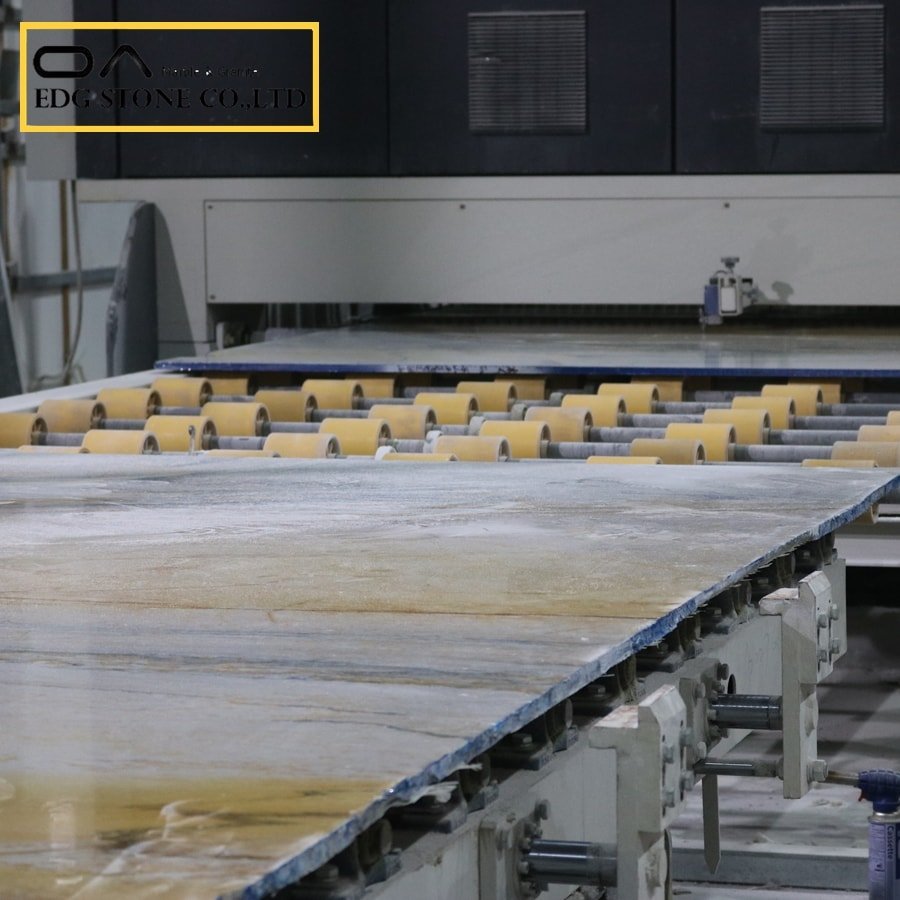
Guide to Quartzite Slabs | EDG Stone
At EDG Stone, our curated collection features:
Quartzite Taj Mahal: Soft white background with delicate gold veins; ideal for luxurious kitchen islands.
Quartzite Bianco Branco: White base with subtle grey veining; versatile for both modern and traditional spaces.
Quartzite Fantasy Brown: Creamy background with chocolate-brown patterns; perfect for warm, inviting kitchens.
Ordering & Installation Tips
Sample First: Always view a slab in person to verify color and veining.
Protective Seal: Apply a high-quality penetrating sealer upon installation and check annually.
Professional Fabrication: Due to quartzite’s hardness, hire experienced fabricators with diamond tooling.
For personalized assistance, contact our EDG Stone advisors or visit our showroom to explore our full slab inventory.
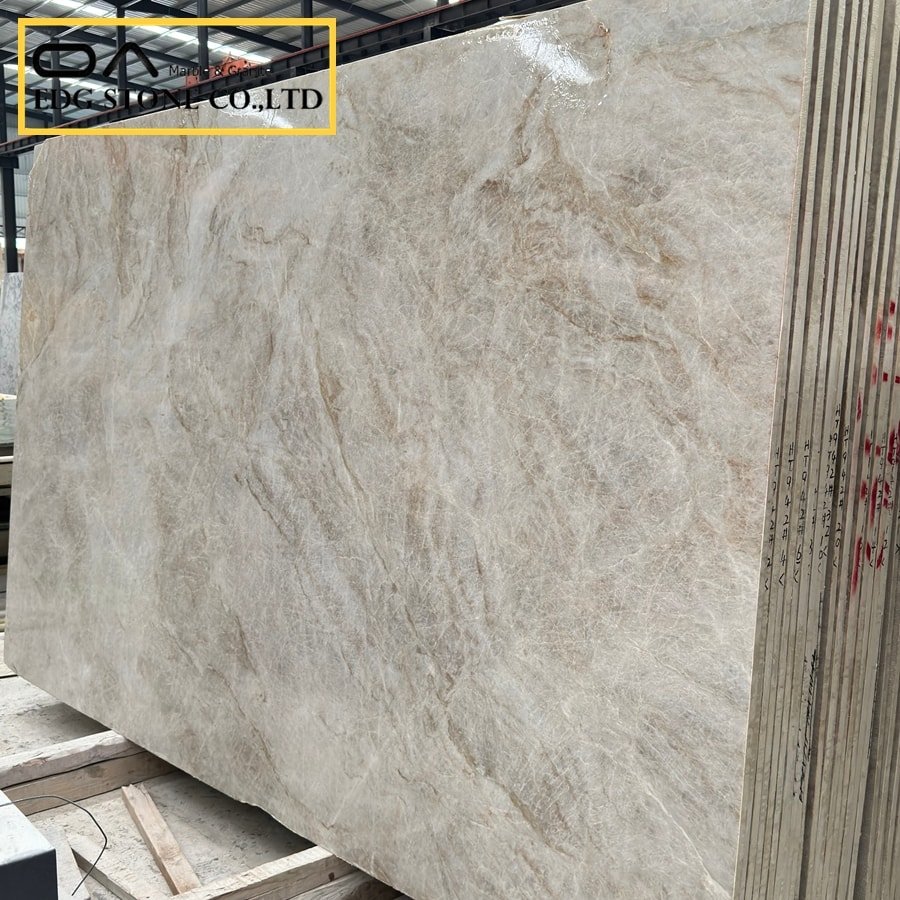
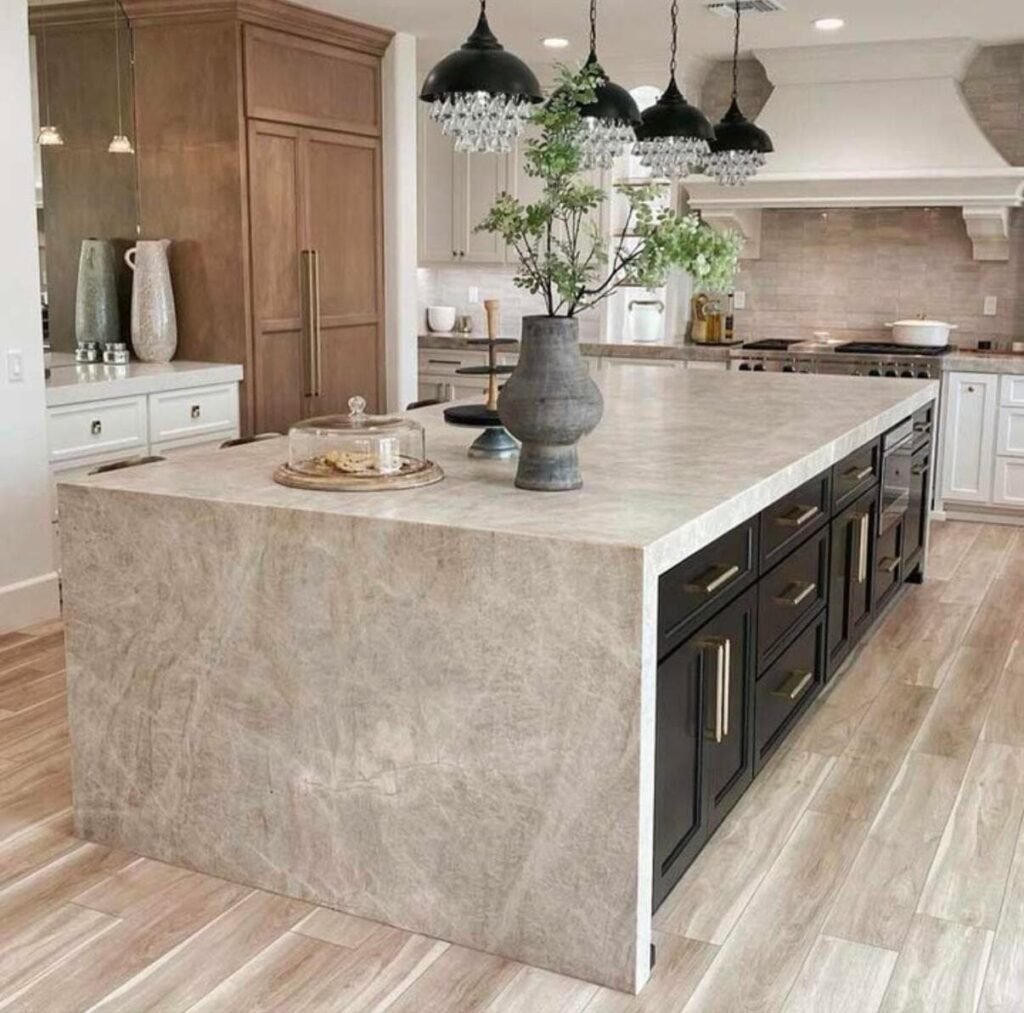
Pros and Cons of Quartzite: Why This Natural Stone is Gaining Popularity
Pros
Looks Like Marble: Affords marble’s elegance with enhanced strength.
Durable: Resistant to heat, scratches, and UV fading—suitable for both indoor and outdoor kitchens.
Unique: Each slab’s natural variation guarantees a one-of-a-kind design.
Cons
Porous: Susceptible to staining without proper sealing and maintenance.
Cost: Typically more expensive than engineered quartz.
Installation Challenges: Heavy weight and hardness require specialized tools and labor.
The Definitive Guide to Quartzite
Formation: Originates as sandstone, metamorphosed under tectonic compression and heat.
Parent Rock: Sandstone composed of sand-sized quartz grains; quartzite is the metasandstone product en.wikipedia.org.
Texture & Grain: Medium-grained, granular texture with interlocking crystals visible to the naked eye; generally gritty to the touch.
Color Variations: Pure quartzite is white to grey, but iron oxides yield pinks, reds, and golds.
Outstanding Types Of Quartzite Countertops
Taj Mahal Quartzite: Elegant white-and-gold veins for a timeless look.
Bianco Branco Quartzite: Crisp white base with soft grey marbling.
Fantasy Brown Quartzite: Cream-to-taupe background with dynamic brown patterns.
White Macaubas Quartzite: Dramatic charcoal and white waves.
Azul Macaubas Quartzite: Striking blue and grey striations.
What You Need to Know About Quartzite Countertops
Sealing: Use a penetrating sealer designed for natural stones; perform a water-drop test annually.
Cleaning: Wipe spills immediately; use mild dish soap and warm water. Avoid harsh or acidic cleaners (e.g., vinegar) to prevent etching.
Protective Measures: Always use cutting boards and trivets—even quartzite can chip under extreme impact.
Outdoor Use: Rated for UV resistance; ideal for outdoor kitchens and patios.
FAQ: Everything You Asked About Quartzite
What are quartzite countertops?
Quartzite countertops are slabs of natural quartzite rock, cut, polished, and sealed for kitchen or bathroom surfaces. They combine marble-like aesthetics with exceptional hardness and heat resistance.What is quartzite used for?
Beyond countertops, quartzite is used for flooring, wall cladding, stair treads, fireplaces, and outdoor applications due to its durability and weather resistance.What is quartzite vs quartz?
Quartzite is a natural metamorphic rock requiring sealing; quartz is an engineered blend of quartz particles and resin, non-porous and maintenance-free.What is quartzite jade?
Quartzite Jade refers to green-tinted quartzite varieties, colored by chromium or chlorite minerals, prized for countertops with verdant veining.What is quartzite’s parent rock?
The parent rock of quartzite is quartz-rich sandstone; under heat and pressure, sandstone transforms into quartzite.What is quartzite formed from?
Formed from sandstone, quartzite arises through regional metamorphism involving tectonic compression and elevated temperatures deep in the Earth’s crust en.wikipedia.org.What is quartzite protolith?
The protolith (original rock) of quartzite is pure quartz sandstone, composed of compacted and cemented quartz sand grains.What is quartzite vs granite?
Quartzite is harder and more heat-resistant than granite, but more porous. Granite, an igneous rock, contains quartz plus feldspar, and mica, offering diverse coloration but slightly lower hardness.What is quartzite tile?
Quartzite tile is cut and finished and is used for floors, walls, and backsplashes. It combines stone’s strength with sleek tile format.What is quartzite texture?
Quartzite has a granular, interlocking texture with visible quartz crystals; it feels slightly gritty, but polishing gives it a smooth finish.What type of rock is quartzite?
Quartzite is a non-foliated metamorphic rock derived from pure quartz sandstone.What kind of rock is quartzite?
It is a metamorphic rock noted for its hardness and durability, commonly used in construction and decorative stone applications.What texture is quartzite?
Characterized by a medium grain, quartzite’s interlocking quartz crystals create a granular appearance and a hard, glassy surface.
Conclusion
From its geological roots as sandstone metamorphosed under immense Earth pressures to its modern role as a premium countertop material, quartzite stands out for its blend of natural beauty, exceptional hardness, and heat resistance. Whether you’re comparing quartzite vs quartz, seeking unique quartzite slabs near me, or exploring signature varieties like quartzite Taj Mahal and quartzite Bianco, this definitive guide equips you with the knowledge to choose, maintain, and appreciate this remarkable natural stone.
30 SEO-Friendly Tags
quartzite slab, quartzite countertops, quartzite vs quartz, quartzite slabs near me, quartzite taj mahal, quartzite kitchen countertops, quartzite countertops near me, quartzite vs quartz countertops, quartzite countertops pros and cons, quartzite bianco, natural stone supplier, quartzite wholesale, quartzite factory, quartzite manufacturer, quartzite cheap, buy quartzite, quartzite China, high quality quartzite, engineered quartz stone, marble alternative supplier, natural stone factory, countertop manufacturer, stone wholesale, slab supplier, countertop installation, kitchen design, bathroom vanity tops, granite vs quartzite, quartzite tile supplier, quartzite texture, quartzite parent rock.
References
Geology.com, “Quartzite: Metamorphic Rock – Pictures, Definition & More,” Geology.com. https://geology.com/rocks/quartzite.shtml geology.com
Wikipedia, “Quartzite,” Wikipedia.org. https://en.wikipedia.org/wiki/Quartzite en.wikipedia.org
University of Auckland, “Quartzite – Geology – Rocks and Minerals,” The University of Auckland. https://rocksminerals.flexiblelearning.auckland.ac.nz/rocks/quartzite.html rocksminerals.flexiblelearning.auckland.ac.nz
The Stone Collection, “What Is the Difference Between Quartz and Quartzite?” TheStoneCollection.com. https://thestonecollection.com/what-is-the-difference-between-quartz-and-quartzite/ thestonecollection.com
ZStone Creations, “Quartzite vs. Granite: The Good, Bad and Ugly,” ZStoneCreations.com. https://zstonecreations.com/quartzite-vs-granite-the-good-bad-and-ugly/ zstonecreations.com
